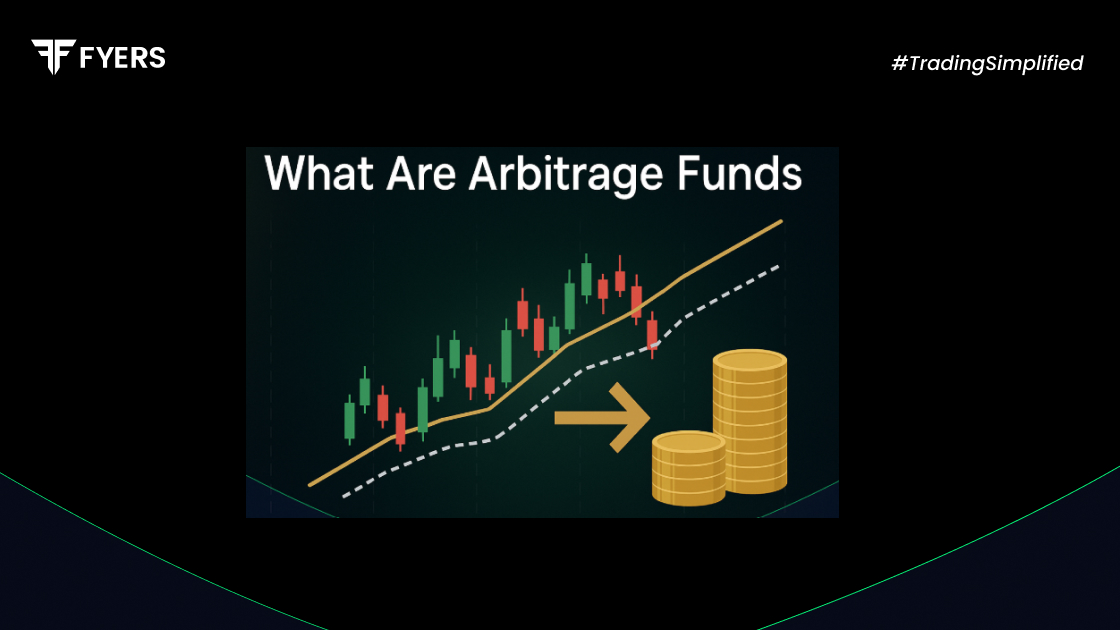

 26 Sep, 2025
26 Sep, 2025
 5 mins read
5 mins read

Arbitrage funds offer a unique way to invest in the stock market with comparatively lower risk. These mutual funds make the most of price differences between the cash and derivatives markets to generate returns. For investors who seek short-term opportunities with a risk profile lower than equity funds, arbitrage funds may be worth considering. Let’s take a detailed look at how these funds work, their features, benefits, and more.
Arbitrage funds are hybrid mutual funds that aim to generate returns by exploiting price mismatches between the spot (cash) and futures markets. They follow a strategy known as arbitrage, where the same security is bought in one market at a lower price and sold in another market at a higher price.
Though these funds invest in equities, they behave more like debt funds in terms of risk and returns, due to their hedged positions. SEBI categorises arbitrage funds under the hybrid mutual fund category, and they are required to invest at least 65% of their assets in equity and equity-related instruments.
Arbitrage mutual funds function by capitalising on temporary price differences in various markets. Here's a basic example:
Suppose the shares of a company are trading at ₹500 in the cash market and at ₹510 in the futures market. The fund manager will buy the stock in the cash segment and simultaneously sell it in the futures segment. On the expiry date, the prices converge, and the difference becomes the return.
This strategy locks in profits regardless of market direction, making arbitrage funds a suitable choice for risk-averse investors, particularly when markets are volatile.
Here are the key features that define arbitrage funds:
Equity-oriented for taxation: Despite being low-risk, these funds are treated as equity funds for taxation, which may offer advantages in the long run.
Hedged positions: They aim to reduce risk by holding offsetting positions in cash and futures markets.
Market volatility dependent: Higher market volatility often results in more arbitrage opportunities.
Short-term focus: Ideal for parking money over a few months, especially during uncertain market phases.
Liquid: These funds typically have high liquidity and can be redeemed within a short time frame.
Arbitrage funds combine equity exposure with lower risk, offering several benefits:
Lower volatility: Since positions are hedged, they are relatively stable compared to pure equity funds.
Tax efficiency: As equity-oriented funds, gains after one year are treated as long-term capital gains (LTCG), taxed at 10% beyond ₹1 lakh, which is more favourable than debt fund taxation.
Safe during market fluctuations: These funds tend to perform better in volatile markets, where price mismatches are more frequent.
Better returns than savings accounts: Arbitrage funds usually offer returns higher than traditional savings accounts or short-term fixed deposits.
High liquidity: Most arbitrage funds allow quick redemptions, making them suitable for short-term needs.
Investing in arbitrage funds is simple and can be done through various channels:
Online platforms: Use mutual fund platforms, brokerages, or fintech apps.
Direct through AMC: Visit the website of the fund house and invest directly.
SIP or lump sum: Choose between Systematic Investment Plans (SIP) for regular contributions or lump sum for one-time investment.
Advisor route: Seek help from a financial advisor to match your investment goal and risk profile.
Before investing, it's important to:
Check the fund's expense ratio and historical performance
Understand the lock-in period or exit load (usually 30-90 days)
Align the fund with your investment horizon and liquidity needs
While arbitrage funds are considered low-risk, they are not entirely risk-free. Here are some risks to consider:
Limited opportunities: In calm markets, the price gap between cash and futures may be minimal, reducing profit potential.
Execution risk: The strategy requires precise and timely trades; any delay could affect returns.
Short-term volatility: Returns may fluctuate slightly in the short term depending on market conditions.
Exit load: Exiting too early may incur a small fee, impacting overall returns.
Despite these, arbitrage funds still hold a better risk-return profile than many other equity or debt instruments for short durations.
Arbitrage funds serve as a practical option for conservative investors looking to benefit from market inefficiencies without taking on high risk. While they rely heavily on market volatility for returns, their hedged structure makes them relatively stable. They also offer tax advantages and better short-term yields than many traditional instruments. As with any investment, understanding the fund’s structure, associated risks, and your financial goals is essential before committing.
No, arbitrage funds are not completely risk free. While they carry lower risk compared to equity funds due to hedged positions, they are still subject to market conditions, limited arbitrage opportunities, and execution risks.
You should consider avoiding arbitrage funds during periods of low market volatility. In such times, the difference between cash and futures prices narrows, leading to fewer opportunities for the fund to generate returns.
Yes, arbitrage funds can be a good option for short-term parking of surplus funds, typically for 3 to 6 months. They offer better returns than savings accounts and are relatively low-risk with high liquidity.
While both serve short-term investment needs, arbitrage funds invest in equity markets using hedged strategies, making them more tax-efficient after one year. Liquid funds, on the other hand, invest in fixed-income instruments and may offer slightly more predictable returns but are taxed as debt funds.
Calculate your Net P&L after deducting all the charges like Tax, Brokerage, etc.
Find your required margin.
Calculate the average price you paid for a stock and determine your total cost.
Estimate your investment growth. Calculate potential returns on one-time investments.
Forecast your investment returns. Understand potential growth with regular contributions.